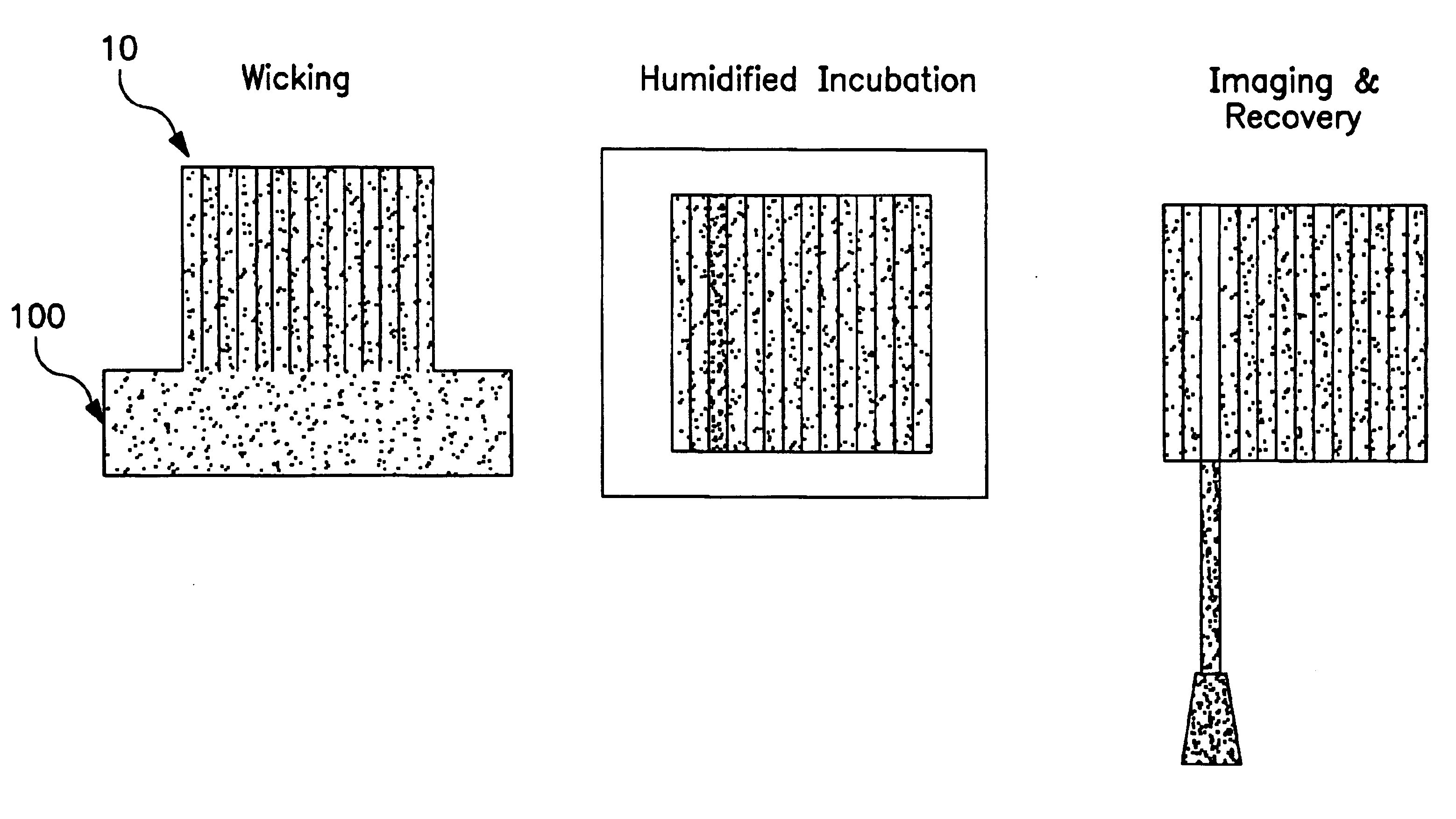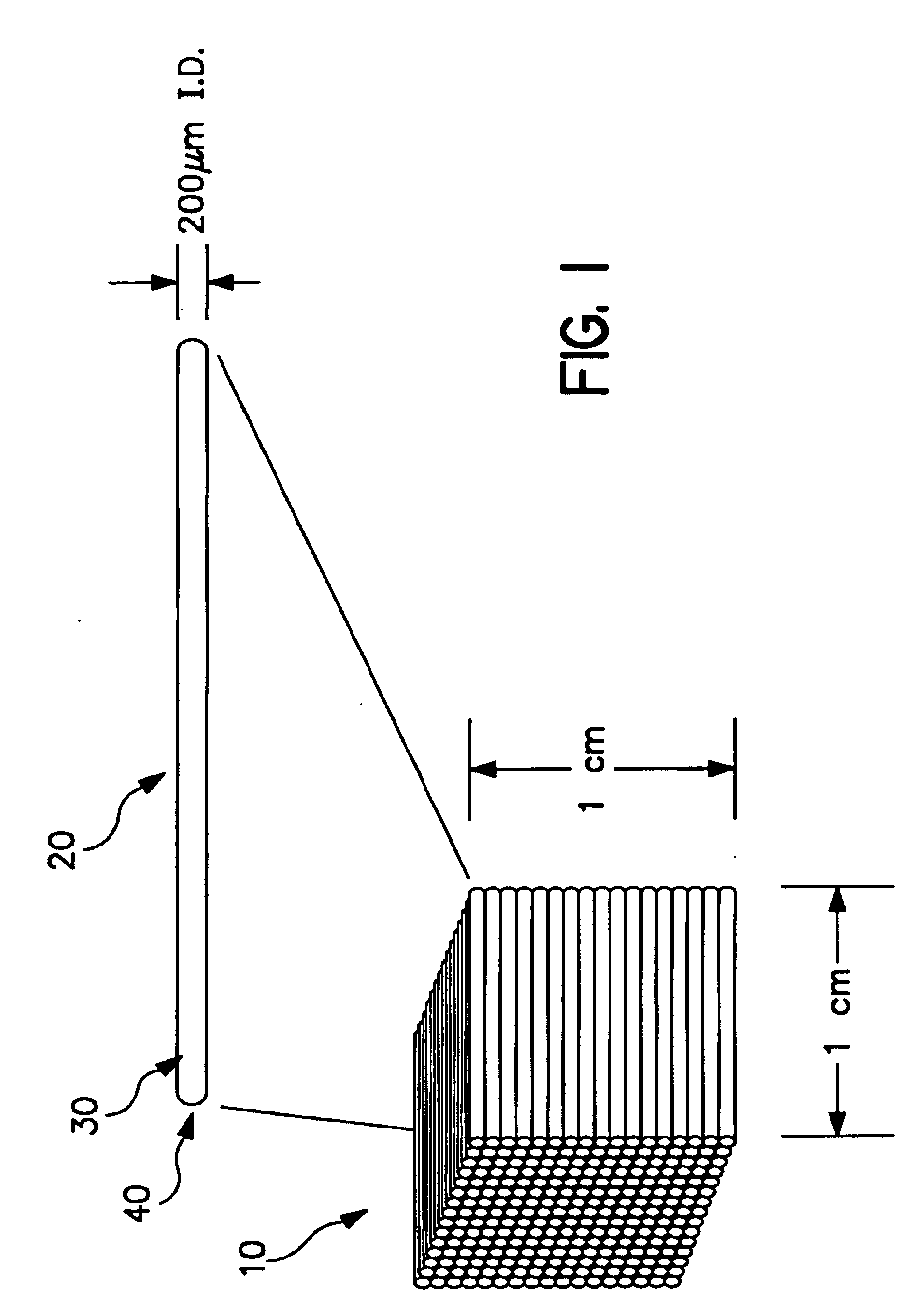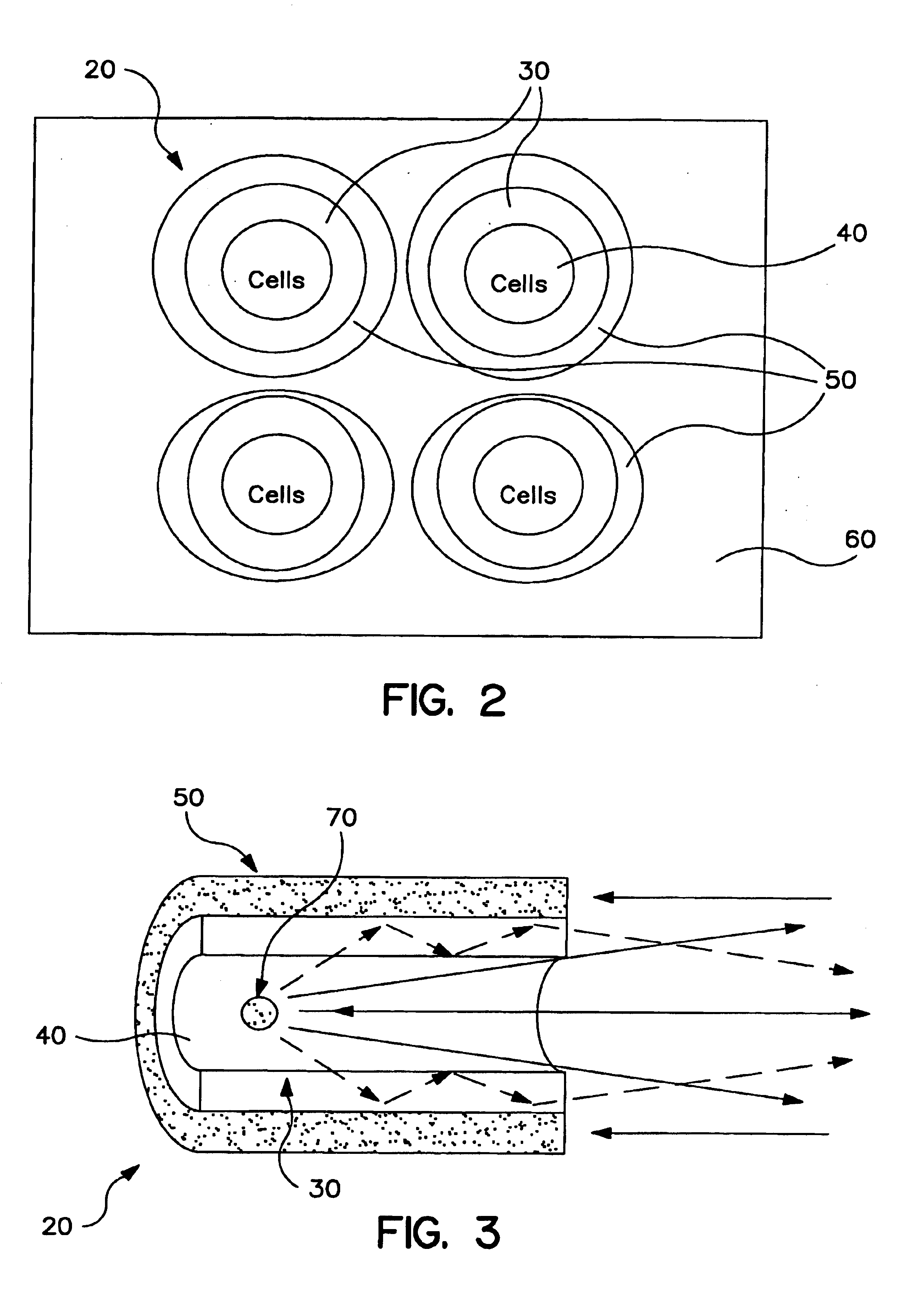Capillary array-based sample screening
a sample and capillary array technology, applied in the field of capillary array-based sample screening, can solve the problems of inability to efficiently apply the current available methods for screening and producing lead compounds to these under-explored resources, difficult or impossible culture of organisms for screening or re-supply, synthesis and development of lead compounds, etc., and achieves rapid and efficient methods.
- Summary
- Abstract
- Description
- Claims
- Application Information
AI Technical Summary
Benefits of technology
Problems solved by technology
Method used
Image
Examples
example 1
DNA isolation. DNA is isolated using the IsoQuick Procedure as per manufacture's instructions (Orca Research Inc., Bothell, Wash.). The isolated DNA can optionally be normalized according to Example 2 (below). Upon isolation, the DNA is sheared by pushing and pulling the DNA through a 25-gauge double-hub needle and a 1-cc syringe about 500 times. A small amount is run on a 0.8% agarose gel to make sure the majority of the DNA is in the desired size range (about 3-6 kb).
Blunt-ending DNA. The DNA is blunt-ended by mixing 45 μl of 10× Mung Bean Buffer, 2.0 μl Mung Bean Nuclease (1050 u / μl) and water to a final volume of 405 μl. The mixture is incubated at 37° C. for 15 minutes. The mixture is phenol:chloroform extracted, followed by an additional chloroform extraction. One ml of ice cold ethanol is added to the final extract to precipitate the DNA. The DNA is precipitated for 10 minutes on ice. The DNA is removed by centrifugation in a microcentrifuge for 30 minutes. The pellet is wash...
example 2
Normalization
Prior to library generation, purified DNA can be normalized. DNA is first fractionated according to the following protocol. A sample composed of genomic DNA is purified on a cesium-chloride gradient. The cesium chloride (Rf=1.3980) solution is filtered through a 0.2 um filter and 15 ml is loaded into a 35 ml OptiSeal tube (Beckman). The DNA is added and thoroughly mixed. Ten micrograms of bis-benzimide (Sigma; Hoechst 33258) is added and mixed thoroughly. The tube is then filled with the filtered cesium chloride solution and spun in a Bti50 rotor in a Beckman L8-70 Ultracentrifuge at 33 k rpm for 72 hours. Following centrifugation, a syringe pump and fractionator (Brandel Model 186) are used to drive the gradient through an ISCO UA-5UV absorbance detector set to 280 nm. Peaks representing the DNA from the organisms present in an environmental sample are obtained. Eubacterial sequences can be detected by PCR amplification of DNA encoding rRNA from a 10 fold dilution of t...
example 3
Water was wicked into arrays comprised of capillaries having 100 μm and 200 μm diameter and that were 25 and 20 mm long respectively. The arrays were weighed initially (t=0) and subsequent time periods. The arrays were incubated at 37° C. and 85% humidity in a humidified incubator. Volumes were calculated from the weights. The experiment demonstrated that 25% of the volume was loss in 5 hours and 37% in 17 hours (FIG. 8).
In a subsequent experiment a humid chamber was made from a pipette tip box with the arrays on the tip rack and water in the bottom of the box (FIG. 9A). The arrays were placed on the tip rack on their sides (capillaries oriented horizontally) during incubation. This incubation method provided a 7-10% loss over 5 hours and a 30% loss over 48 hours (FIG. 9B).
PUM
| Property | Measurement | Unit |
|---|---|---|
| temperatures | aaaaa | aaaaa |
| temperatures | aaaaa | aaaaa |
| temperature | aaaaa | aaaaa |
Abstract
Description
Claims
Application Information
 Login to View More
Login to View More - R&D
- Intellectual Property
- Life Sciences
- Materials
- Tech Scout
- Unparalleled Data Quality
- Higher Quality Content
- 60% Fewer Hallucinations
Browse by: Latest US Patents, China's latest patents, Technical Efficacy Thesaurus, Application Domain, Technology Topic, Popular Technical Reports.
© 2025 PatSnap. All rights reserved.Legal|Privacy policy|Modern Slavery Act Transparency Statement|Sitemap|About US| Contact US: help@patsnap.com



